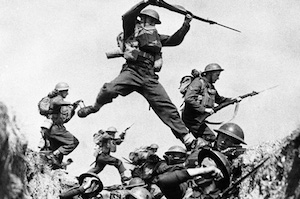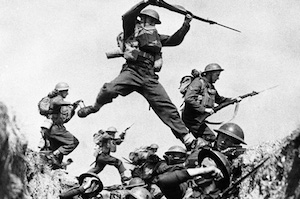
America’s decision to withdraw troops from Afghanistan was greeted with disdain in some quarters. But so far, most pundits have explored this debacle from the vantage point of foreign affairs by either lamenting the decline of American influence or lauding the move as a justified containment of an aggressive foreign policy. Both views are worth pondering. However, Afghanistan and other foreign policy failures should spark a broader debate on the economics of war.
America’s engagement in war has proven to be quite costly. According to a major 2019 study, from 2001 to 2019, taxpayers incurred a cost of $6.4 trillion for US wars in Afghanistan, Iraq, Syria, and Pakistan. A key finding of the report is that the total budgetary burden of the post-9/11 wars will continue to balloon as the American government remains committed to interest payments and funding the rising expenses of veteran care.
Further, estimates compiled by the Pentagon suggest that the military escapades of the US have cost each taxpayer $7,623. Invariably, international bankers and defense contractors benefit from wars, though in the long run, war reverberates throughout the economy. Yet despite the costs of warfare, the idea that wars drive innovation is still widely promulgated. This argument has some merit because history demonstrates that the demands of wartime have spurred innovations like penicillin, electronic computers, and the radar.
Innovations birthed by the pangs of warfare can serve a useful commercial function; however, on the flip side, warfare diverts the attention of the sharpest minds from solving scientific and commercial problems to crafting solutions aimed at destroying life. According to Nathan Rosenberg, during the Industrial Revolution, the quest to solve commercial problems led to the emergence of novel products, so in the absence of war, the potential of scientists is deployed to more productive use.
While warfare has resulted in notable inventions, we will never know the industrial innovations that were never conceptualized because engineers and scientists were busy aiding the military-industrial complex. On the basis that involvement in World War II stimulated scientific research, economists Daniel Gross and Bhaven Sampat conclude in a recent report that war-related efforts led to the emergence of technology clusters. Some might mistake this deduction as evidence for the innovation-inducing effects of warfare.
Doing so, however, is premature, since there is no guarantee that applications designed to conduct warfare will be germane to industry. The building of military technology is not motivated by a desire to enhance the utility of consumers or create scientific breakthroughs. Such developments are therefore coincidental. Indeed, commercially viable inventions wrought by warfare must be celebrated, but there is a possibility that these innovations are mediocre substitutes for the actual products that would have been created had inventors been laboring to create commercial or scientific value.
Moreover, the innovation effect of the world wars could be contingent on time. Twentieth-century wars produced superior inventions due to institutional quality and access to a sophisticated body of scientific research. Similarly, because sectoral linkages were more robust, recognizing connections across industries became a sensible business strategy. Readers may contend that this thesis is vitiated by Geoffrey Packer’s audacious text The Military Revolution: Military Innovation and the Rise of the West, but the two theses complement each other.
Packer’s landmark study is just one text in a stream of studies aiming to provide an answer for the rise of Western civilization. To arrive at his conclusion, Packer had to interrogate multiple facets of European history and culture. Other regions duly engaged in ferocious battles, but their conflicts did not lead to a profound transformation in the art of war and military technology. Europeans built a project dedicated to maximizing the efficiency of warfare by updating technology, whereas institutions of a similar caliber elsewhere were nonexistent. The innovations induced by warfare are determined by the expertise and agenda of those waging war. Always remember that gunpowder was invented in China, but its full potential was actualized in the West.
Likewise, economic analysis disputes the narrative that America’s participation in World War II laid the basis for postwar economic growth. Instead the evidence shows that America’s insertion in the war crippled productivity in the manufacturing sector. Alexander J. Field explains: “Between 1941 and 1948, total factor productivity within manufacturing declined…. Considering the effects on TFP, the labor force, and the physical capital stock, the impact of World War II on the level and trajectory of U.S. potential output following the war, was, on balance, almost certainly negative.”
Additionally, warfare entails the diminution of consumer welfare. Taxes extracted from hapless citizens to finance military expenses could have been invested, saved, or spent on commodities to increase the utility of consumers. An economy is judged based on its capacity to enhance the utility of consumers, and the war economy fails in this regard when taxes decrease utility by diminishing resources available to citizens. Meanwhile, applying the law of unseen costs to the government, it becomes obvious that expenditure on war limits the availability of resources for critical sectors like healthcare and education. By expending resources on fruitless wars, politicians indicate that their propoor rhetoric is empty talk.
However, in documenting the effects of war we should remind readers that trauma inflicted on the battleground negatively affects the well-being of combatants. After returning home, many ex-soldiers suffer from post-traumatic stress disorder. Victims of post-traumatic stress disorder find it challenging to reintegrate into society and struggle to maintain social connections. Their inability to adjust to postwar life affects productivity and employability. Unfortunately, the damages sustained by some veterans preclude them from working.
The burden of post-traumatic stress disorder compounded by physical ailments entails a stressful environment for families. Hence, the effects of warfare ripple throughout society because the depressed state of veterans can adversely affect the well-being of family members. Caring for ailing veterans is costly, even when they receive philanthropic and governmental support. As such, doing so is likely to deplete scarce resources. Such circumstances regress the productivity of people associated with veterans and restrain the supply of labor when employees exit the labor market to nurse relatives. Lastly, in accounting for the effects of warfare, it must be noted that affected veterans put additional strain on the health sector, minimizing the quality of care that could be provided to other patients in their absence.
Politicians and intellectuals may project the rhetoric that wars are in our long-term interest, but the facts reveal that on average their results are deleterious to the utility and well-being of citizens.
Reprinted with permission from Mises.org.

